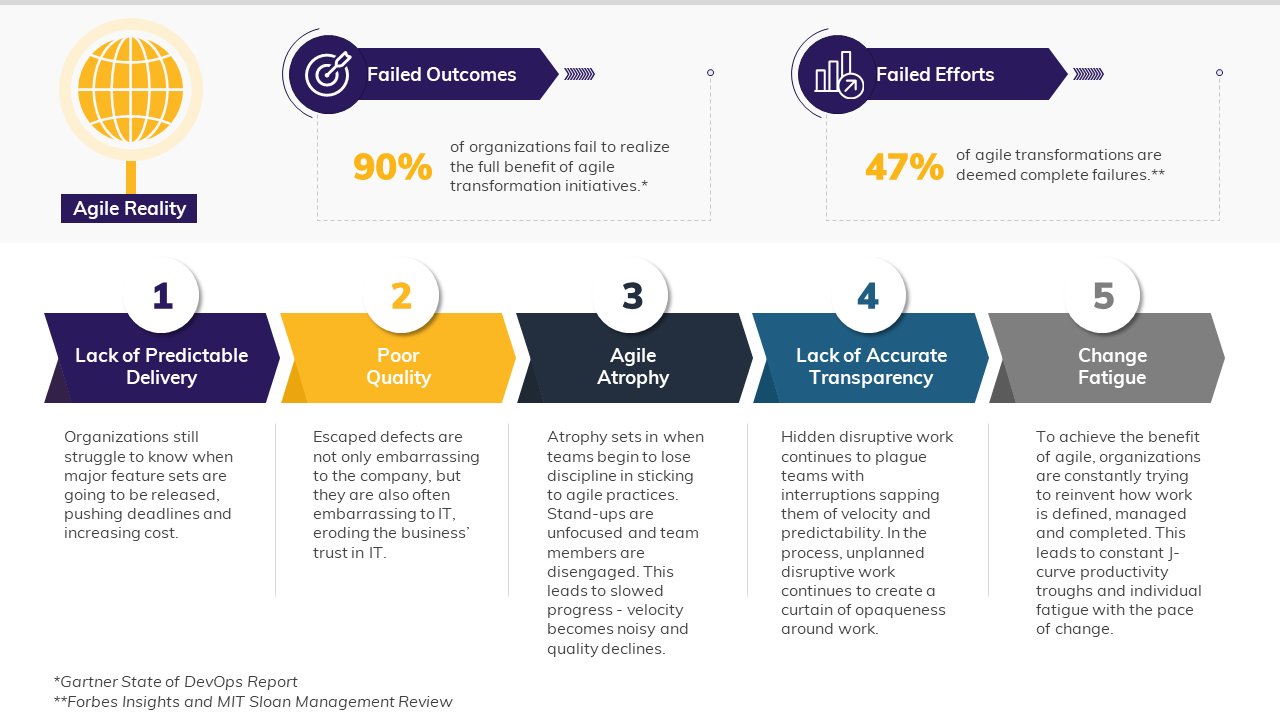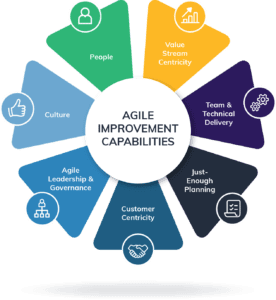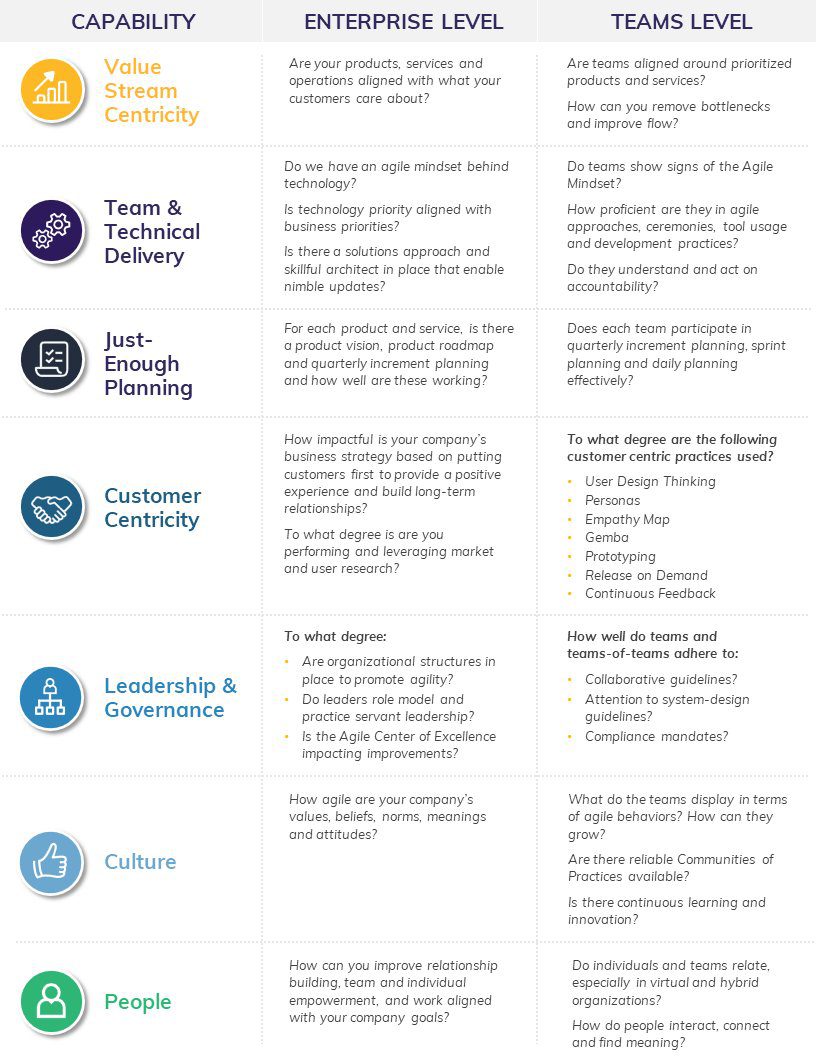Agile transformation can help your business thrive, but you have to do it right. We discuss some agile failures you may run into and provide solutions for how you can avoid these.
Are you a leader struggling to execute your company’s agile transformation? You’re not alone. According to the State of Agile Report, organizations face plenty of challenges in implementing or expanding agile, particularly in environments that “continue to be both unpredictable and volatile.”
In fact, one-third of the survey participants identified 10 or more challenges faced in their business agility adoption journey. The most significant barriers included challenges with organizational culture, resistance to change and lack of organizational support and skills, among others.
Considering these very real obstacles, it’s no wonder that many agile transformations fail. The Gartner State of DevOps Report unveiled that 90 percent of organizations fail to realize the full benefit of agile transformation initiatives. Further, companies deem 40 percent of agile transformations “complete failures,” as stated by Forbes Insights and MIT Sloan Management Review.
Reasons for agile transformation failure include goal misalignment, not going far enough up the stack and failing to address business concerns. A transformation can also fail when company leaders don’t implement control mechanisms that enable dynamic adaptation to market and environmental changes in a productive and cost-efficient manner.
If you’re a business executive, your company may have an agile transformation office, and you may have seen or heard program increment planning, retrospectives and product increments discussed in meetings and email memos. However, you may have also noticed there is little to show for the efforts, and your company is still not able to advance in the competition, much less adjust to market changes.
Similarly, if you are an IT executive, you may have observed that although software releases have increased, teams still cannot predict when they will accomplish tasks. Perhaps it’s “all hands on deck” after each release to deal with bugs or issues until they’re resolved, usually siphoning a day or two of your staff’s hours as they work through the inevitable fallout. This frequently happens when agile is implemented as a process without pragmatic consideration and adaptation to the context of processes, the environment, and even team members and their willingness to implement change.
So, what are the next steps when you feel in over your head during your agile transformation? Don’t throw in the towel! Let’s look at a few solutions.
Improvements Over Transformation
Going back to the way things used to be is not a viable solution, and neither is starting over (as many consulting firms will lead you to believe). Many organizations have been involved in agile transformations for a long time. People get tired and burn out. Starting over could counteract enthusiasm and process involvement. And fiscally, there is likely little to nothing left in the budget for relaunching.
Agile is now mainstream. So, it’s time to focus on targeted improvements over transformation — continuous systemic and team-level agility improvements as part of ongoing business and operations.
While transformation means change – which can be scary to some people – improvement also typically means making something faster, easier or more streamlined, which most people embrace. It’s time to let your teams know they can make a difference, starting with addressing the areas that will have the most impact, running targeted diagnostics, and implementing specific improvements to drive positive outcomes.
Ask Questions About Your Agile Transformation Status
To be successful in leading an agile transformation, you need to ask questions and listen as much as you speak.
- Are your expectations of agility in alignment with the transformation vision?
- Has your transformation vision changed and caused a mismatch?
- Are you influential at the executive and enterprise level and care about overall business agility?
It’s important to realize you can only go so far by focusing on one level. Agility thrives when all levels come together and align. Once you have the answers to these questions and a realistic understanding of how far you can go, you can proceed to uncover the root causes and circumstances you need to improve.
If your sphere of influence is at the enterprise level, you need the company to move quickly and deftly to future-proof the organization. Look for the capacity to pivot, strength and continuity to be competitive in the current and future market. You need diagnostics and steps to improve the primary line with which you earn money and add value.
In addition, you’ll need to invest in an innovative product or service line in addition to your current lines and evaluate what has potential. If the new line becomes viable, shift the budget toward it and create a buffer capacity. You must be prepared for different scenarios so you can make changes and scale quickly.
If your sphere of influence stands in the IT organization, your desired improvements need to focus on what you want, the performance characteristics you care most about and what you need to achieve those characteristics. Improvements at this level are about realizing those conditions. It is likely about the ability to form teams around products rather than projects, elevating Scrum Masters and teams’ aptitudes, improving a certain product, breaking dependencies, aligning around the business architecture, or improving DevOps.
Agile Improvement Capabilities You Need for Success
At Centric Consulting, we emphasize seven key agility capabilities — tailored to create the ability for an organization to move quickly and easily — companies should base improvements on to gain the most value. Each area has a great impact on improving agility in an organization and is addressed differently depending on what level in your organization you want to target.
We begin with initial questions in each area and proceed with root cause analysis to uncover what truly needs to improve before we collaborate on improvement implementation.
Areas include:
- Value Stream Centricity
- Team & Technical Delivery
- Just-Enough Planning
- Customer Centricity
- Leadership & Governance
- Culture
- People.
Need a Boost for Improving Agility?
One way to ensure you reset your agile transformation and move forward improving your processes is to work with a partner. Look for someone with a holistic, system-level thinking view and approach to improving your agile capabilities. You need someone to connect the dots between business agility, technology and team-level agility.
The goal is for them to help your organization develop and deliver software at speed and scale with reliability – think “bringing Google, Facebook, Amazon, Apple, Netflix-style software development and release capabilities to your organization” – ultimately improving business agility at scale. Regardless of the agile framework you implement, your partner should help you focus on the capabilities you need to ensure success.
Coaching for Success
Another way to achieve success is through a coaching team. A strong coaching team focuses on outcome-based goals and reviews where you need to improve to achieve those goals. You aren’t looking to embark on another agile transformation, so your coaching team should focus on diagnostics and targeted solutions to achieve your outcomes. Because the most significant barriers to agile adoption include challenges with organizational culture, resistance to change, and lack of support and skills, look for a team with expertise in these areas.
Conclusion
We know feeling like you’re on the failing end of your agile transformation journey is disheartening. But you aren’t stuck there! Take the time to evaluate your status, recognize the steps you need to improve and invest in a partner or coaching team who can lead you the rest of the way. With intentionality and patience, you will see success.




